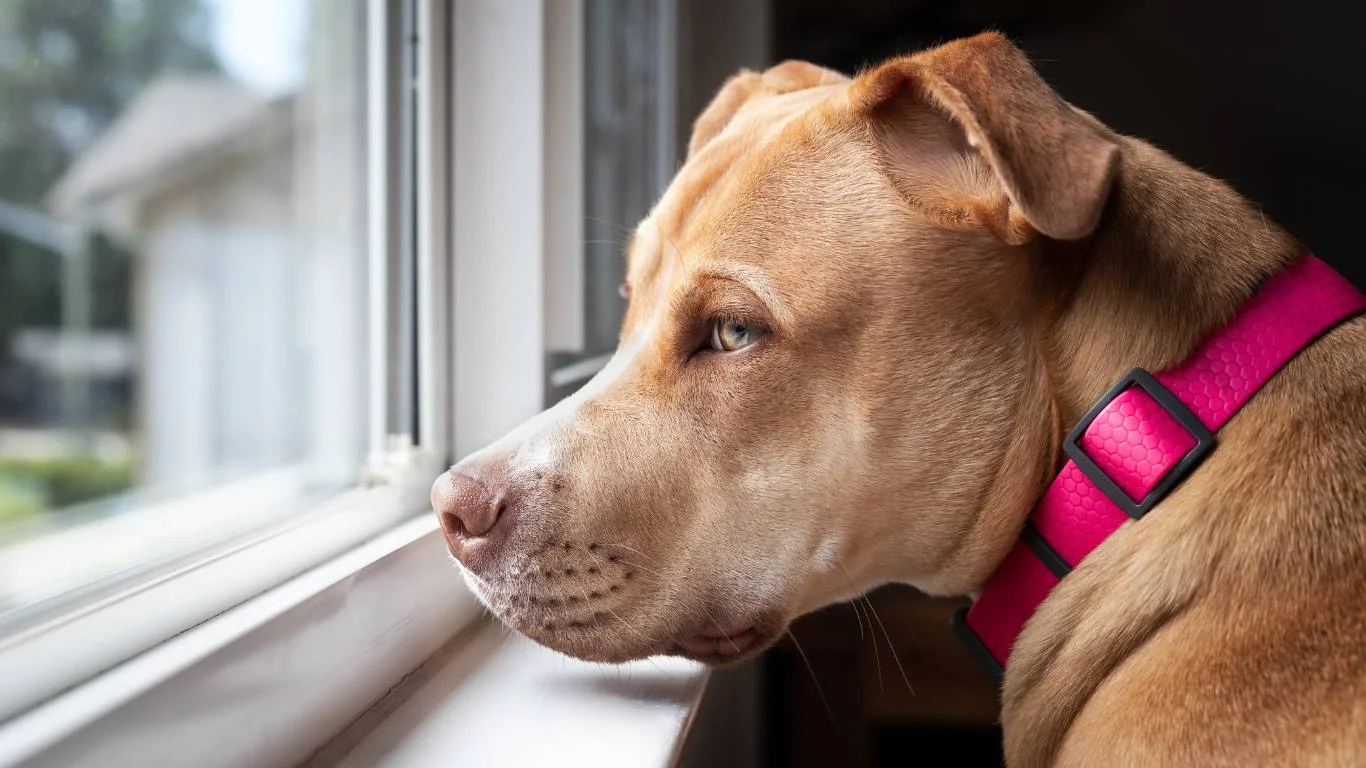7 Effective Ways to Prevent Dog Allergies from Getting Worse Fast
As a pet nutritionist and care expert with years of experience working in veterinary clinics, I’ve seen firsthand how dog allergies can impact our furry friends. The scratching, the constant licking, the irritated skin – it’s enough to make any dog (and pet parent) uncomfortable. But here’s the thing: while you may feel helpless when your dog suffers from allergies, there are several ways you can prevent dog allergies from getting worse. With a few lifestyle adjustments, some dietary changes, and a proactive approach, you can keep your dog comfortable and help reduce the severity of their allergic reactions.
Understanding Dog Allergies: What You Need to Know

Before we dive into how to prevent dog allergies from worsening, it’s important to first understand what’s going on when a dog has allergies. Dogs can be allergic to a variety of things, including pollen, dust mites, mold, certain foods, or even flea saliva. The immune system of an allergic dog overreacts to these allergens, leading to common symptoms like itching, inflammation, hot spots, ear infections, and digestive upset.
As with humans, allergies can range from mild to severe, and some dogs may develop sensitivities later in life. The goal is to help reduce their exposure to allergens and manage symptoms so that they don’t worsen over time.
1. Identifying the Triggers: How to Pinpoint What’s Affecting Your Dog

The first step in preventing dog allergies from getting worse is to identify what’s causing the allergic reaction. It may sound like a no-brainer, but many pet owners miss this crucial step. Allergies can develop to common household allergens like dust mites or cleaning products, and in some cases, the culprit could even be the food you’re feeding them.
If your dog is showing signs of allergies like itching or skin irritation, try to observe if there are any patterns. Do certain activities trigger the symptoms? For example, does the scratching get worse after your dog has been outside during pollen season? Or perhaps your dog’s symptoms worsen after a meal? Keeping track of these triggers will give you a better idea of what could be causing the reaction.
Veterinarians can also perform tests to pinpoint environmental or food allergies. Skin tests, blood tests, or elimination diets can help identify the source of the problem, so don’t hesitate to reach out to your vet if you’re unsure. Once you have a better understanding of what’s causing the allergy, you can take the next steps to reduce exposure and ease your dog’s symptoms.
2. Creating an Allergy-Free Environment: Reducing Exposure to Triggers

Reducing your dog’s exposure to allergens is one of the most effective ways to prevent their allergies from worsening. You don’t have to live in a bubble, but making a few small changes in your home and daily routine can help your dog breathe easier and feel more comfortable. Here’s what you can do:
- Keep Your Home Clean: Regular cleaning can help remove dust mites, pollen, and mold from your home. Use a vacuum cleaner with a HEPA filter, and wash your dog’s bedding, toys, and other belongings regularly. Consider investing in air purifiers to help filter out allergens from the air.
- Avoid Outdoor Allergens: If your dog’s allergies are triggered by pollen, try to limit outdoor time during peak pollen seasons. If your dog has to go outside, wipe their paws and coat down with a damp cloth afterward to remove any pollen that might have stuck to them.
- Control Fleas: Flea allergies can cause serious discomfort, so make sure your dog is on a proper flea prevention regimen. Speak to your vet about the best flea control methods for your dog.
- Reduce Household Chemicals: Many cleaning products, air fresheners, and candles contain chemicals that can irritate your dog’s respiratory system. Try using natural or pet-safe cleaning products, and avoid exposing your dog to strong chemical scents.
3. Proper Grooming: Keeping Your Dog Clean and Comfortable
Regular grooming is essential for dogs with allergies. Bathing your dog and keeping their coat clean helps remove allergens like pollen, dirt, and dander. Make sure to use hypoallergenic or allergy-friendly shampoos that are gentle on your dog’s skin and won’t irritate their condition.
If your dog has long hair, regular brushing is essential. Brushing helps remove excess hair, dirt, and dander, and it also helps prevent matting, which can trap allergens close to your dog’s skin. Don’t forget to trim the hair around your dog’s eyes, ears, and paws to avoid any build-up of allergens.
Sometimes, a good bath and grooming session can provide instant relief for a dog suffering from seasonal allergies. Just be sure to consult your vet for the right products to use and how often to bathe your dog based on their unique needs.
4. Diet and Nutrition: The Role of Food in Managing Dog Allergies
Believe it or not, your dog’s diet plays a major role in their allergic reactions. Food allergies are relatively common in dogs, and certain ingredients can trigger symptoms like vomiting, diarrhea, or skin irritation. By switching to a hypoallergenic dog food or focusing on high-quality, limited ingredient diets, you can help reduce the chances of allergic reactions.
Here are some dietary tips to consider:
- Switch to Hypoallergenic Dog Food: If you suspect your dog has food allergies, try switching to a hypoallergenic formula. These foods are designed to limit common allergens like grains, soy, or dairy, which may be contributing to your dog’s symptoms.
- Introduce Omega-3 Fatty Acids: Omega-3s have anti-inflammatory properties that can help calm allergic reactions in dogs. Look for fish-based foods or add fish oil to your dog’s diet to support their immune system.
- Eliminate Potential Allergens: If you’re unsure which ingredient is causing your dog’s allergies, try an elimination diet under the guidance of your vet. This method involves removing all potential allergens from your dog’s food for a few weeks and then slowly reintroducing them one at a time to see which one causes a reaction.
5. Managing Allergies with Medication: When to Consider Treatment

Sometimes, despite your best efforts with diet and lifestyle changes, your dog’s allergies may still need medical intervention. When that happens, it’s important to consult with your vet about the best treatment options. There are various medications that can help manage allergic reactions in dogs, and depending on the severity of the symptoms, your vet might recommend one or more of the following:
- Antihistamines: These are commonly used to treat seasonal allergies or environmental allergens like pollen. They help reduce itching and inflammation and can often provide relief for dogs with mild to moderate allergy symptoms. However, some dogs may not respond well to antihistamines, so it’s essential to work with your vet to find the right option.
- Steroids: For more severe cases of allergies, corticosteroids may be prescribed to help manage inflammation and itching. While steroids can be effective, they should only be used under the supervision of a veterinarian due to potential side effects when used long-term.
- Immunotherapy: This treatment involves exposing your dog to small amounts of the allergen over time to help build up their immunity. It’s similar to allergy shots for humans and can be particularly helpful for dogs with environmental allergies.
- Topical Treatments: For dogs with skin allergies or hot spots, topical creams and sprays may help soothe the skin and reduce inflammation. These treatments can provide fast relief and are especially beneficial when used in combination with other allergy management strategies.
Keep in mind that every dog is different, and what works for one dog might not work for another. I’ve personally seen pets improve with the right combination of treatments, so don’t get discouraged if it takes time to find the right one for your dog.
6. Environmental Control: Creating an Allergy-Friendly Lifestyle for Your Dog

Sometimes, managing allergies goes beyond just cleaning and grooming – it’s about creating an environment that minimizes triggers as much as possible. Whether your dog has food allergies, seasonal sensitivities, or environmental triggers, making a few simple adjustments around your home can go a long way in improving their quality of life.
Here are some additional tips to help manage your dog’s allergies at home:
- Limit Exposure to Carpet and Rugs: Carpets and rugs can trap allergens like dust mites, pollen, and mold, making them a breeding ground for allergy triggers. If your dog suffers from allergies, consider replacing carpets with hard floors like tile, wood, or laminate, or use washable area rugs that can be cleaned frequently.
- Create a Dog-Friendly Zone: Designate an allergy-free zone in your home, especially for dogs with environmental allergies. Keep this space well-ventilated and free from dust and allergens. It’s a great place for your dog to relax and get some relief from allergens.
- Clean Your Dog’s Environment Regularly: As mentioned earlier, regular cleaning is crucial, but it’s also worth emphasizing the importance of washing your dog’s toys, bedding, and even their favorite blankets. Keep their resting areas clean and allergen-free to minimize the buildup of dust, pollen, or other irritants.
- Keep Windows Closed During High Pollen Season: If your dog has seasonal allergies, try to keep windows closed during peak pollen season. This can help prevent pollen from entering the home and triggering allergic reactions. Consider investing in air conditioning or a dehumidifier to help keep the air inside fresh and clean.
7. Bathing and Skin Care: Soothe Your Dog’s Skin Naturally
If your dog has allergies, especially skin-related ones, keeping their skin clean and moisturized is essential. Bathing your dog regularly can help wash away allergens from their coat, and using the right products can prevent dry or irritated skin.
Here are some tips for bathing and skin care:
- Choose the Right Shampoo: Always opt for a hypoallergenic, gentle shampoo that’s designed for dogs with sensitive skin. Avoid products with artificial fragrances, dyes, or harsh chemicals that can worsen your dog’s condition.
- Use Oatmeal Baths: Oatmeal is naturally soothing and can help alleviate itching caused by allergies. I’ve recommended oatmeal baths to many pet owners, and they’re often amazed by the relief it provides for their dogs. You can either use an oatmeal-based dog shampoo or prepare a simple oatmeal bath at home by blending oats with warm water.
- Moisturize the Skin: After bathing, apply a moisturizing spray or balm to your dog’s skin to help lock in moisture. This can help prevent dryness, cracking, and irritation caused by constant scratching or licking.
- Avoid Over-Bathing: While bathing your dog regularly is important, don’t go overboard. Over-bathing can strip the natural oils from their coat and skin, making the allergy symptoms worse. Stick to a bathing schedule that works for your dog’s skin type and allergy needs.
8. Natural Remedies: Exploring Holistic Options for Allergy Relief
If you’re looking for natural ways to help manage your dog’s allergies, there are several holistic remedies that may provide relief. While these shouldn’t replace veterinary advice or treatment, many pet owners find that incorporating some of these options into their dog’s routine can help soothe their symptoms and improve their overall well-being.
Here are a few natural remedies to consider:
- Coconut Oil: Coconut oil has natural anti-inflammatory and antibacterial properties, which can be helpful for soothing irritated skin. You can apply it topically to your dog’s skin or add it to their food in small amounts to promote overall skin health.
- Apple Cider Vinegar: Apple cider vinegar is often used as a natural remedy for itchy skin. Mix equal parts of water and apple cider vinegar and use it as a rinse or spray on your dog’s coat. It can help balance the pH of their skin and provide relief from itching.
- Herbal Supplements: Some herbs like chamomile, calendula, and turmeric are known for their anti-inflammatory properties and may help reduce allergic reactions. Before giving your dog any herbal supplements, it’s essential to consult with your vet to ensure they’re safe and appropriate for your pet’s specific needs.
While natural remedies can offer some relief, it’s always best to consult with a vet before trying any new treatments. What works for one dog may not work for another, so it’s important to consider your dog’s unique situation when exploring holistic options.
9. The Importance of Regular Vet Check-ups: Stay Ahead of Allergies

When managing your dog’s allergies, one of the most important steps is regular visits to your veterinarian. Allergies are a tricky business – they can change over time, and what worked for your dog in the past may not be as effective in the future. That’s why it’s crucial to stay proactive and keep your vet in the loop about any changes in your dog’s condition.
During these check-ups, your vet can help you:
- Monitor Allergy Symptoms: Regular check-ups ensure that your dog’s allergies are properly monitored. Your vet can assess whether their symptoms are improving or worsening, and adjust treatments as necessary.
- Adjust Medications: If your dog is on allergy medication, your vet may need to tweak the dosage or switch medications based on how well they’re responding to the treatment.
- Conduct Tests: As allergies evolve, new triggers may appear. Routine testing, like skin or blood tests, can help identify new allergens that may be affecting your dog. This is especially important for dogs with severe or long-term allergies.
- Provide Preventive Care: Besides managing allergies, your vet can provide preventive treatments, such as flea control or vaccinations, that help your dog avoid other health issues that might worsen their allergic reactions.
I always tell pet owners that building a strong relationship with their vet is one of the best things they can do for their dog’s long-term health. Not only can they help you manage allergies, but they can also offer advice on how to improve your dog’s overall well-being, including diet and lifestyle choices.
10. Allergy-Proofing Your Dog’s Daily Routine: Small Changes That Make a Big Difference

When it comes to preventing your dog’s allergies from getting worse, it’s the little things that often make the biggest impact. Adjusting your dog’s daily routine can help them avoid triggers and reduce exposure to allergens, which is essential in keeping their symptoms at bay. Here are a few practical, everyday steps you can take to allergy-proof your dog’s routine:
- Wipe Your Dog’s Paws After Walks: If your dog is exposed to allergens like pollen or dust during walks, make it a habit to wipe their paws with a damp cloth as soon as they come inside. This simple step helps prevent allergens from being tracked into your home and keeps them from irritating your dog’s skin.
- Avoid Peak Allergy Times: If your dog has environmental allergies, try to avoid walking or playing outside during peak pollen times, typically early mornings and evenings. Check local pollen counts to help plan outdoor activities.
- Use an Air Purifier: I can’t emphasize this enough: air purifiers can do wonders, especially in homes with dogs that suffer from seasonal allergies. They help filter out airborne allergens like dust, pollen, and dander, keeping your dog’s breathing space much cleaner.
- Consider a Humidifier: Dry air can aggravate allergies, so if you live in a dry climate, using a humidifier in your home can help maintain moisture in the air, preventing skin irritation and respiratory issues for your dog.
11. Dealing with Chronic Allergies: When to Consider Long-Term Solutions
If your dog suffers from chronic allergies, it can feel like an ongoing battle. But with persistence, you can manage their condition effectively and ensure they lead a comfortable life. In these cases, long-term strategies are key, and you might want to consider some more in-depth treatments.
Long-term solutions include:
- Allergy Shots (Immunotherapy): If your dog’s allergies are severe or unresponsive to other treatments, immunotherapy could be the answer. This involves regular injections of the allergens your dog is allergic to, with the goal of desensitizing their immune system over time. It can take a few months to see results, but many dogs benefit from this treatment in the long run.
- Prescription Diets: For dogs with food allergies, a prescription diet may be necessary to prevent allergic reactions. These diets are formulated to avoid common allergens and help manage symptoms effectively. Many pet owners have seen positive changes by switching to specialized foods.
- Proactive Grooming: In addition to regular baths, a chronic allergy dog might benefit from more frequent grooming sessions to remove allergens from their fur and skin. This helps to keep their coat healthy and free from irritants.
- Ongoing Medication: While medications like antihistamines or steroids are often used for immediate relief, long-term management may require continuous use of some treatments. Working with your vet to determine a safe, effective medication routine is essential.
Managing chronic allergies in dogs takes time, but with the right approach, you can help your dog live comfortably. As a pet care expert, I’ve witnessed many dogs improve dramatically with the right combination of treatments, and it’s incredibly rewarding to see the relief it brings.
References
For more information on managing dog allergies, check out the following trusted sources:
- PawPatron Pet Health Resources
- American Kennel Club – Allergy Management for Dogs
- American Veterinary Medical Association – Canine Allergies
Disclaimer
This article is intended for informational purposes only. It is not a substitute for professional veterinary advice, diagnosis, or treatment. Always consult your veterinarian before starting any new treatments or making changes to your dog’s health regimen. Individual pet health varies, and your veterinarian will provide the best guidance for your dog’s unique needs.





